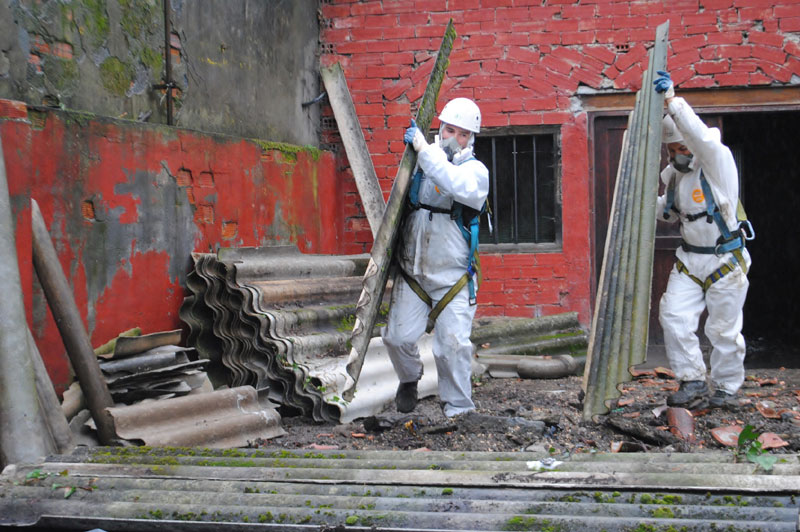
Glyn Atkinson, Chartered Practitioner for Atkinson Safety Services, warns against complacency when it comes to Asbestos.
Are you currently working in premises that are aged pre-1999? If so, have any tests been completed in the past to prove beyond doubt whether any of the three types of Asbestos still linger behind walls, inside ceilings, voids, loft spaces etc? If found, was it removed by licensed contractors or merely protected and marked up as remaining?
If you are the owner or leaseholder of the building, you are the legal duty holder under HSE Regulations.
As a duty holder, it is your responsibility to have done all in your power to protect all of the employees, visiting contractors and any public or customers who have access to where this hidden killer is quietly stored, just waiting to be disturbed and strike. You have a legal duty to protect all of these people under the Asbestos At Work Regulations 2012.
If Asbestos is present, and you have outside contractors who could drill holes in areas where Asbestos exists, you have to ensure that they are not exposed by work you have requested – it’s you who would be legally accountable for any potential consequences. Your insurances such as public liability and employees’ liability policies will not protect you from any compensation claim in the future.
What is Asbestos?
Asbestos is a natural fibrous rock. Acting as an insulator, it was widely used within homes and other buildings until 1999. It has good fire protection properties and protects against corrosion, because of this, you may find it in many common products including ceiling tiles, pipe insulation, boilers and sprayed coatings. It was extensively used from the 1950s through to the mid-1980s but can be found in buildings built before the year 2000.
There are three main types:
Crocidolite (also known as blue asbestos)
Amosite (also known as brown asbestos)
Chrysotile (also known as white asbestos)
What needs to be done?
The correct action is for any suspect areas to be tested by an external lab test under what is called an intrusive (material removal) Type 3 survey of all danger areas. Sadly, this is not a free service – the owner or leaseholder under terms and conditions contracts will be the ones who have to foot the bill.
Can I pull some material out of the wall, ceiling and send it through the post? – No!! It has been proven in the past that exposure to a single fibre of Asbestos has triggered a natural body cancer and caused a death, so you pulling a mass of suspect material would potentially release millions of microscopic fibres into the air for someone to breathe in.
Asbestos was a great material for many industrial applications, but is the hidden killer, and can remain hidden for 60 years or more before striking someone down. That’s why there is a worldwide ban on usage, and protection MUST be in place to prove that any pre-1999 building has been sanitised from Asbestos, or has been found, sealed in place by experts, and is under a long term and ongoing maintenance protection scheme.
Seek help
Seek the help of a professional service – they advertise in all telephone directories or Google – “licensed Asbestos removal services”. Ensure that they have ARCA accreditation – the national standard required.
Why risk huge fines and potential work area shutdowns when simple testing can set your mind at ease, or at least you know the extent of your problem?
If you’d like to find out more details about how your business can receive a consultation from Atkinson Safety Services phone: 01472 313979, email: glyn@atkinsonsafetyservices.co.uk.









